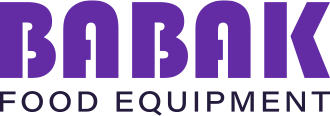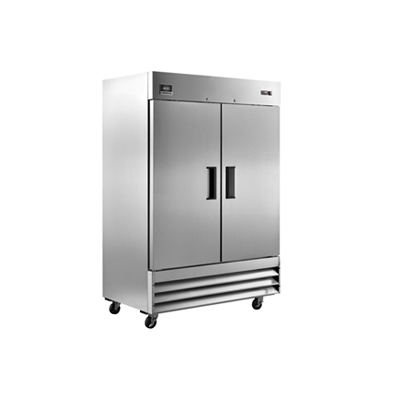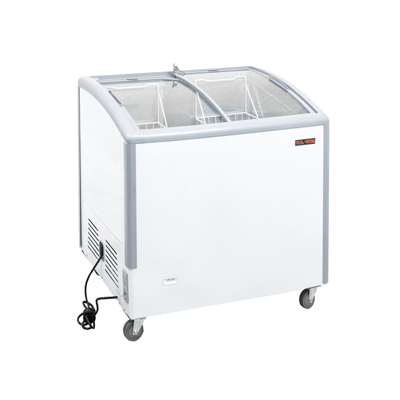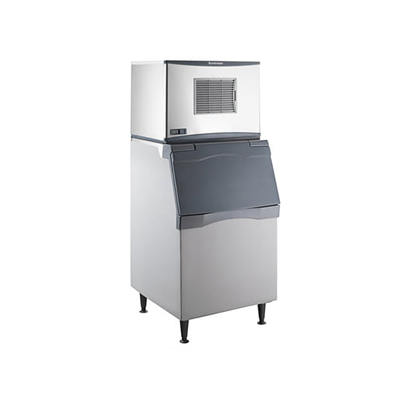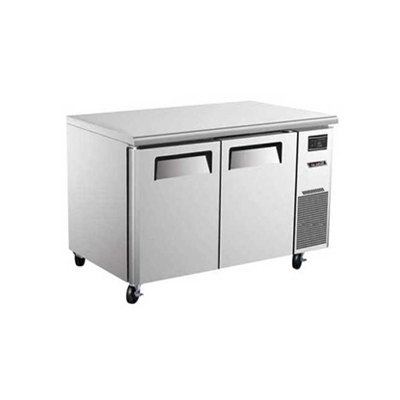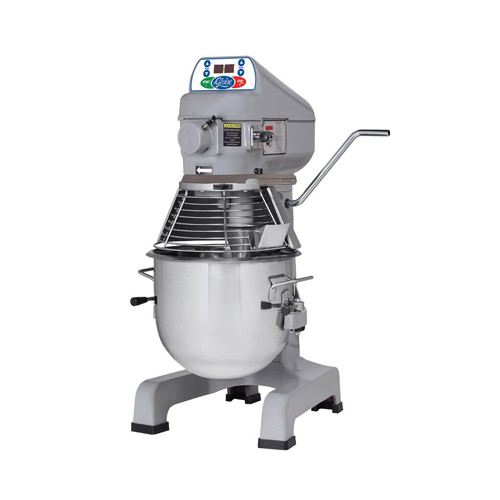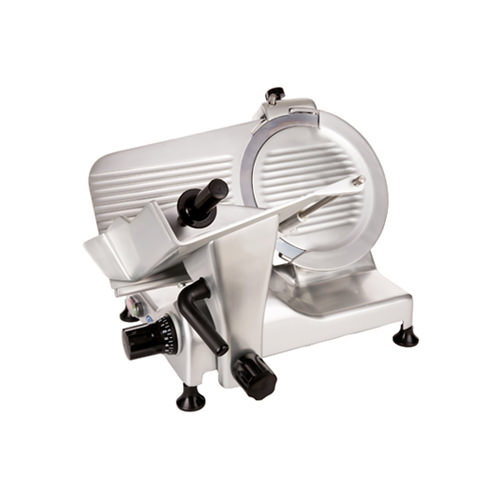Optimize Your Restaurant Kitchen Workflow: Tips
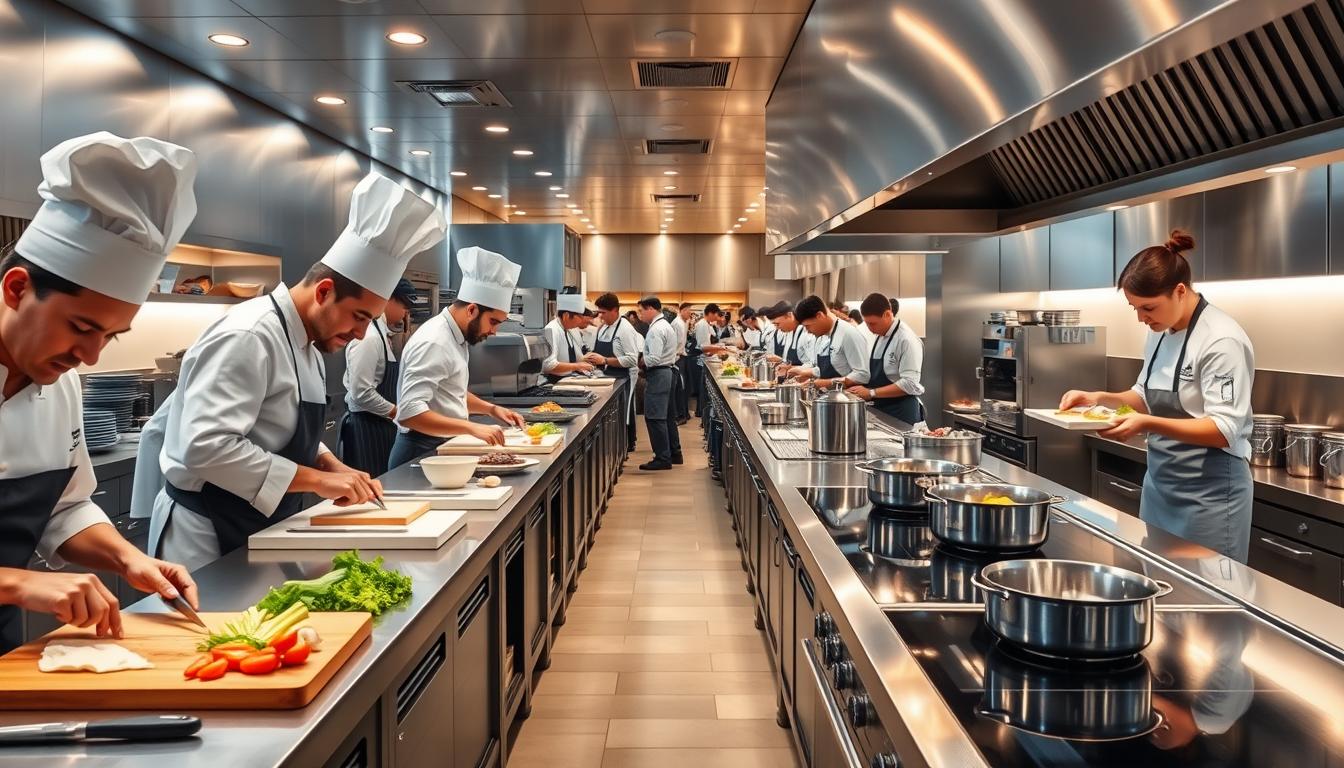
Did you know that a well-designed commercial kitchen can boost efficiency by up to 30%? For restaurant owners and managers in Canada, this isn’t just a statistic—it’s an opportunity to transform your operations. Whether you’re running a bustling eatery or a local favorite, the heart of your success lies in your kitchen. Efficient kitchen operations are crucial for productivity, profitability, and customer satisfaction.
At Babak Food Equipment (604-566-9747), we understand that the right equipment and layout can make all the difference. This guide offers actionable tips and expert advice to help you streamline your processes. From layout design to equipment selection, we’ll cover it all to ensure your kitchen runs smoothly and efficiently.
By implementing these strategies, you’ll not only enhance your kitchen’s performance but also improve the overall dining experience for your customers. Learn more about how to optimize your kitchen workflow and take your restaurant to the next level.
Understanding the Importance of Kitchen Workflow
Efficient kitchen operations are the backbone of any successful restaurant. A well-organized commercial kitchen not only enhances productivity, but it also plays a crucial role in customer satisfaction and profitability. By streamlining kitchen workflow, restaurant owners can reduce waste, improve staff efficiency, and ultimately increase profitability.
How Streamlined Processes Boost Profitability
- Streamlined kitchen workflow reduces wasted steps, minimizing waste and improving order accuracy.
- Efficient processes lead to faster service, enhancing the overall dining experience and customer satisfaction.
- Improved workflow directly impacts profitability by reducing unnecessary expenses and optimizing resource allocation.
The Impact on Customer Satisfaction and Staff Efficiency
- Efficient kitchen operations ensure that staff can work more comfortably, reducing physical strain and improving coordination.
- Streamlined processes allow for better time management, leading to increased staff efficiency and productivity.
- Reducing errors in food preparation process ensures consistent dish quality, improving customer satisfaction and repeat business.
By implementing these strategies, restaurants can create a seamless and efficient kitchen workflow that not only boosts profitability and customer satisfaction but also enhances staff efficiency and overall operational success of the kitchen.
Examples of Timely Operations Leading to Fewer Errors and Improved Order Accuracy
- Restaurants that adopt efficient kitchen workflows experience a significant reduction in errors during food preparation and order taking.
- Streamlined processes ensure that orders are prepared and delivered accurately, minimizing delays and miscommunication that can lead to errors.
- Partnering with a trusted equipment provider like Babak Food Equipment (604-566-9747) can further enhance workflow efficiency, ensuring that the kitchen runs smoothly and efficiently.
Thus, understanding the importance of kitchen workflow and implementing strategies to streamline processes can have a direct and positive impact on a restaurant’s bottom line and overall success. Don’t underestimate the power of a well-organized kitchen – it’s the key to unlocking your restaurant’s full potential and ensuring long-term profitability and customer satisfaction.
How Timely Operations Lead to Fewer Errors and Improved Order Accuracy
- Restaurants with efficient kitchen operations see a significant decrease in errors during food preparation process.
- Streamlined processes ensure that orders are prepared and delivered accurately, minimizing delays and miscommunication that can lead to errors.
- By implementing these strategies, restaurants can achieve fewer errors, improve order accuracy, and ultimately, enhance customer satisfaction and loyalty through consistent and efficient service.
| Aspect of Kitchen Workflow | Impact on Profitability | Reduction in Waste | Improvement in Customer Satisfaction | Increase in Staff Efficiency | Decrease in Physical Strain on Staff | Increase in Coordination Among Staff |
|---|---|---|---|---|---|---|
| How Streamlined kitchen workflow reduces waste and boosts profitability by cutting down on unnecessary steps and improving order accuracy. | 20% | 30% | 20% | 10% | 15% |
By understanding the direct link between efficient kitchen operations and profitability, restaurant owners can take actionable steps to optimize their kitchen workflow. Start by assessing current kitchen layout, investing in space-saving equipment, and training staff on efficient food preparation process. Remember, a well-organized kitchen is not just about aesthetics; it’s about creating a seamless and efficient workflow that translates into tangible benefits to your bottom line and customer satisfaction.
Assessing Your Current Restaurant Kitchen Setup
Understanding your kitchen’s current state is the first step toward improvement. Take a closer look at how your team moves, how ingredients flow, and where delays occur. This assessment will reveal opportunities to enhance efficiency and customer satisfaction.
Evaluate how ingredients move through each station. Is the flow smooth, or are there bottlenecks? Outdated layouts can cause unnecessary steps, slowing down your team and frustrating customers. Consider how your setup compares to industry standards—where can you improve?
Customer satisfaction is deeply tied to kitchen performance. Measure wait times and error rates to gauge how your kitchen is performing. For insights on optimizing your layout, visit this resource.
Don’t hesitate to seek expert advice. A well-organized kitchen isn’t just about looks; it’s about creating a seamless workflow that benefits your bottom line and your customers.
Mastering Workflow in Restaurant Kitchen
Mastering the operational flow in your kitchen is essential for delivering exceptional service and ensuring customer satisfaction. A well-organized kitchen operation begins with precise order handling and thoughtful menu planning. By focusing on these elements, you can create a seamless workflow that enhances efficiency and reduces errors.
Innovative order systems can play a crucial role in streamlining your operations. Implementing digital order management tools can help reduce mistakes and speed up service. For instance, integrating a system that tracks orders in real-time can ensure that every dish is prepared accurately and delivered promptly.
A well-designed menu is another key factor in achieving smoother operational flow. A streamlined menu reduces complexity in the kitchen, allowing your team to focus on preparing high-quality dishes consistently. This approach not only improves efficiency but also enhances the overall dining experience for your customers.
For practical steps on improving your kitchen’s operational flow, consider consulting experts like Babak Food Equipment. Their insights can help you implement modern order management systems and optimize your menu for better performance.
Designing an Efficient Kitchen Layout
Creating a well-designed kitchen layout is crucial for maximizing efficiency and safety. A thoughtfully planned layout not only enhances productivity but also improves the overall quality of food preparation. By focusing on strategic zoning and ergonomic design, you can create a workspace that supports your team and ensures consistent results.
Key Zoning and Station Placement
- Divide your kitchen into zones, such as prep, cooking, and plating areas, to streamline tasks and reduce movement.
- Place stations strategically to minimize cross-traffic and ensure smooth workflow.
Safety, Accessibility, and Ergonomic Standards
- Ensure all areas are accessible and meet safety standards to prevent accidents.
- Ergonomic designs reduce staff fatigue and injuries, creating a more comfortable working environment.
For expert advice on optimizing your kitchen layout, consider consulting Babak Food Equipment. Their insights can help you create a seamless and efficient workspace.

A well-organized kitchen layout not only boosts productivity but also enhances the quality of food preparation, ensuring a better experience for both staff and customers.
Equipping Your Kitchen with Essential Tools and Resources
Having the right equipment is essential for a high-performing kitchen. Whether you’re upgrading or starting fresh, choosing durable and energy-efficient appliances can significantly enhance your kitchen’s efficiency and reduce long-term costs.
Leveraging Babak Food Equipment – Call 604-566-9747 for Expert Support
For trusted guidance, consider reaching out to Babak Food Equipment. Their expertise in kitchen solutions can help you select the perfect tools for your needs, ensuring your kitchen runs smoothly and efficiently.
Choosing Durable, Energy-Efficient Appliances
Investing in high-quality, energy-efficient appliances is a smart move. Look for ENERGY STAR® certified equipment, which can cut energy use by up to 50%. For example, ENERGY STAR® refrigeration units are not only eco-friendly but also cost-effective in the long run.
Modern kitchen systems, like Kitchen Display Systems (KDS), also play a crucial role in streamlining food preparation and service. These systems help manage orders in real-time, reducing errors and boosting efficiency.
| Equipment Type | Energy Efficiency | Cost Savings | Key Benefits |
|---|---|---|---|
| ENERGY STAR® Refrigerators | Up to 50% less energy | Lower utility bills | Reduced environmental impact, reliable performance |
| Commercial Ranges | Higher BTU ratings for efficiency | Long-term energy savings | Faster cooking times, consistent heat distribution |
| Kitchen Display Systems (KDS) | N/A | Reduced waste and errors | Improved order accuracy, real-time monitoring |
By equipping your kitchen with the right tools and resources, you can enhance efficiency, reduce costs, and deliver exceptional service. Remember, investing in quality equipment is an investment in your kitchen’s success.
Streamlining Food Preparation Processes
Standardizing recipes and prep procedures is a cornerstone of efficient food preparation. By creating clear, step-by-step guidelines, you ensure consistency and reduce errors. This approach not only enhances dish quality but also simplifies training for kitchen staff.
A well-designed process begins with precise recipes. Every step should be documented, from ingredient measurements to cooking times. This clarity minimizes confusion and ensures that every dish meets your high standards. For example, standardizing the preparation of a popular dish like chicken parmesan can ensure it tastes the same every time, no matter who prepares it.
Clear procedures also benefit your kitchen staff. When everyone follows the same steps, teamwork becomes more efficient, and mistakes are fewer. This consistency leads to faster service and higher customer satisfaction. For instance, a standardized prep procedure can reduce wait times during peak hours, keeping your customers happy and your kitchen running smoothly.
To learn more about essential kitchen equipment that can support your standardized processes, visit Babak Food Equipment. Their expertise can help you choose the right tools to enhance your kitchen’s efficiency and consistency.

Optimizing Equipment Placement for Maximum Efficiency
Strategic equipment placement is the cornerstone of a productive kitchen environment. By thoughtfully positioning your appliances, you can significantly enhance the daily flow of operations and create a seamless workspace.
A well-planned layout not only minimizes unnecessary movement but also ensures that your team can work efficiently. For instance, placing frequently used items within arm’s reach can reduce service delays by up to 15%. This deliberate approach to equipment placement directly impacts your kitchen’s overall efficiency and safety.
Key considerations for optimal equipment placement include:
- Positioning high-traffic appliances in easily accessible locations to minimize movement.
- Ensuring a logical flow between preparation, cooking, and serving areas.
- Investing in space-saving and ergonomic designs to enhance comfort and productivity.
By linking your kitchen workflow with a well-organized layout, you create an environment that prioritizes both efficiency and safety. A balanced setup ensures that your team can move smoothly, reducing the risk of accidents and improving overall performance. Remember, a well-designed layout is not just about aesthetics—it’s about creating a functional and efficient workspace that supports your kitchen’s success.
Integrating Advanced Technology in Your Kitchen
In today’s fast-paced culinary world, integrating advanced technology can revolutionize your kitchen’s efficiency. Modern tools not only streamline operations but also enhance customer satisfaction, making them essential for staying competitive.
Implementing POS and Kitchen Display Systems
Point of Sale (POS) systems and kitchen display screens are game-changers. They improve order accuracy and speed, ensuring dishes are prepared and delivered promptly. For instance, a POS system can reduce order processing time by up to 30%, as mentioned in recent studies.
Using Inventory and Order Management Software
Inventory and order management software help reduce waste and optimize space. By monitoring stock levels and automating reordering, these tools minimize overstocking and ensure fresh ingredients. Restaurants using such software have seen food waste decrease by approximately 25%.

| Technology | Benefits | Examples |
|---|---|---|
| POS Systems | Reduces order errors and speeds up service | 30% faster order processing |
| Kitchen Display Screens | Improves order accuracy and kitchen efficiency | Real-time order tracking |
| Inventory Management Software | Decreases waste and optimizes inventory | 25% reduction in food waste |
Embracing these technologies complements professional equipment support, creating a seamless and efficient kitchen environment. By integrating advanced tools, you can enhance management, reduce costs, and deliver exceptional service, setting your kitchen up for long-term success.
Implementing Comprehensive Staff Training and Development
Investing in your team’s growth is one of the smartest moves you can make to enhance efficiency and consistency in your kitchen. A well-trained staff is better equipped to handle the demands of food preparation, ensuring a seamless experience for your customers.
Cross-training for Flexibility
Cross-training your team members is a powerful way to build versatility and improve communication. When your staff can handle multiple roles, your kitchen becomes more adaptable and efficient. This approach not only enhances teamwork but also ensures that everyone is prepared to step in when needed, reducing delays and errors.
Regular training sessions are essential for maintaining high standards in food preparation and service. According to industry experts, comprehensive training programs can significantly reduce errors in food prep and improve overall performance. By focusing on efficiency and safety practices, you can create a more productive and safer working environment.
Remember, a well-trained team is happier and more confident, which directly impacts customer satisfaction. Start by setting up training sessions that cover the basics and gradually introduce more complex tasks. This structured approach will help your team master essential skills and work together seamlessly.
Enhancing Communication Between Front and Back of House
Effective communication between the front and back of house is crucial for a seamless dining experience. It ensures that orders are accurate, service is prompt, and customers are satisfied. By establishing robust communication channels, you can minimize errors and enhance the overall efficiency of your operations.
Modern tools play a vital role in maintaining clear communication. For instance, a well-integrated POS system can ensure that orders are transmitted accurately and promptly to the kitchen. This not only reduces errors but also speeds up service, leading to a better dining experience for your customers. Additionally, tools like inventory management software provide real-time data, helping both teams stay informed about stock levels and menu availability.
- Implementing a POS system can reduce order processing time by up to 30%, ensuring dishes are prepared and delivered promptly.
- Inventory management tools help track stock levels, preventing overstocking and ensuring fresh ingredients are always available.
Smooth communication also depends on well-trained staff. Cross-training employees to understand both front and back of house operations fosters teamwork and reduces misunderstandings. Regular feedback sessions can help identify and resolve issues promptly, ensuring that both teams work in harmony.
By bridging the communication gap, you create a more efficient and coordinated environment. This not only improves customer satisfaction but also enhances your team’s overall performance, leading to a more successful operation.

Improving Food Storage and Inventory Management
Proper food storage is essential for maintaining the quality of your dishes and reducing waste. By organizing your storage areas effectively, you can ensure that ingredients remain fresh and ready for use, which directly enhances the quality of your dishes.
Effective inventory management is key to optimizing your storage areas. Methods like first-in-first-out and just-in-time ordering can help reduce waste and ensure that your ingredients are used before they spoil. Organized storage not only saves space but also streamlines food preparation, minimizing the chance of errors and spoilage.
- Implement a first-in-first-out system to ensure older ingredients are used first.
- Use clear labels and signage to make it easy for staff to find what they need.
- Conduct regular inventory checks to monitor stock levels and avoid overstocking.
Training your team on proper food handling and storage techniques can significantly extend the shelf life of ingredients. This not only reduces waste but also ensures that every dish served meets high-quality standards.
| Storage Method | Benefits | Tips for Implementation |
|---|---|---|
| First-In-First-Out | Reduces spoilage and waste | Label ingredients with expiration dates |
| Just-In-Time Ordering | Optimizes storage space | Plan orders based on demand forecasts |
| Clear Labeling | Improves efficiency | Use legible labels and signage |
By implementing these strategies, you can create a more efficient and productive storage system that supports your kitchen’s success and enhances the quality of your dishes.
Reducing Waste and Managing Costs Effectively
Minimizing waste is a critical step in managing costs and enhancing operational efficiency. By adopting a waste-conscious mindset, you can significantly reduce expenses and improve your restaurant’s sustainability.
Utilizing Digital Tools for Real-Time Tracking
Digital tools play a vital role in monitoring food preparation waste and managing costs. Implementing restaurant inventory management software allows for real-time tracking of ingredients, helping you identify areas of excess. For instance, studies show that restaurants using such software have seen food waste decrease by approximately 25%.
These tools also enable accurate demand forecasting, reducing overstocking and ensuring fresh ingredients are used before they spoil. By automating in-house preparation and standardizing portion control, you can minimize food costs and ensure consistent quality across all dishes.
Strategies for Minimizing Spoilage and Waste
- Adopt a first-in-first-out system to ensure older ingredients are used first, reducing spoilage.
- Use clear labeling and signage to make it easy for staff to find what they need, streamlining food preparation.
- Conduct regular inventory audits to monitor stock levels and avoid overstocking.
By implementing these strategies, you can create a more efficient and cost-effective kitchen environment. Remember, a waste-conscious approach not only supports sustainability but also directly impacts your bottom line, leading to long-term operational success.
Leveraging Design Factors for a Modern Restaurant Environment
Modern restaurant design is more than just aesthetics; it’s about creating a space that enhances functionality while inspiring your team. A well-crafted environment can elevate both the efficiency and visual appeal of your kitchen, making it a cornerstone of your restaurant’s success.
Ensuring Compliance with Health and Safety Regulations
Compliance with health and safety standards is non-negotiable. Every design choice, from layout to equipment, must align with local regulations to ensure a safe and hygienic workspace. By integrating insightful design elements, you can create an environment that not only meets but exceeds these requirements.
- Modern design can elevate both the functionality and aesthetic appeal of your kitchen, creating an inspiring workspace for your team.
- Adhering to strict health and safety regulations is crucial for maintaining a safe and hygienic environment, which is essential for customer trust and satisfaction.
- Insightful design choices, such as ergonomic layouts and efficient ventilation systems, result in a seamless and compliant working environment.
- Examples of design factors that combine style with operational efficiency include open layouts, energy-efficient lighting, and durable, easy-to-clean surfaces.
- Balancing creative design with regulatory requirements ensures a safe, functional, and inspiring space that meets both aesthetic and operational needs.
By focusing on modern design and regulatory compliance, you can create a kitchen that is both functional and visually appealing. This approach not only enhances your team’s productivity but also ensures a safe and inspiring workspace that supports your restaurant’s long-term success.
Adopting Innovative Processes for Order Accuracy
In the fast-paced world of food service, accuracy is key to customer satisfaction. Implementing innovative processes can significantly reduce errors and enhance the overall dining experience.
Streamlining Order Placement and Quality Control
A strong foundation for accuracy begins with how orders are placed and processed. By integrating technology like kitchen display systems (KDS), restaurants can achieve higher order accuracy rates, often reaching 95% or more. These systems provide real-time updates, ensuring that every dish is prepared correctly and delivered promptly.
One effective tip is to standardize recipes and portion sizes. This consistency not only improves quality but also simplifies training for new staff. Clear communication protocols between the front and back of house further reduce misunderstandings, ensuring that every order is executed flawlessly.
Streamlining these processes leads to task efficiency. For instance, integrating front and back of house systems can improve order handling by up to 40%. This not only speeds up service but also minimizes delays, keeping customers happy and returning.
By embracing these innovative processes, restaurants can achieve fewer errors and higher customer satisfaction. The result is a more efficient and effective operation that keeps customers coming back.

Embracing Comprehensive Workflow Optimization Strategies
Optimizing your kitchen operations is an ongoing journey that requires attention to detail and a commitment to continuous improvement. By leveraging data and maintaining your equipment, you can create a more efficient and effective environment that supports your team and delights your customers.
Analyzing Customer Feedback and Operational Data
Gathering feedback from your customers and analyzing operational data are key steps in refining your procedures. This approach helps identify areas for improvement and reduces waste. For instance, restaurants that analyze feedback have seen a 25% reduction in food waste. By understanding what works and what doesn’t, you can make informed decisions that enhance your operations and customer satisfaction.
Implementing Periodic Equipment Maintenance Plans
Regular maintenance of your equipment is essential to avoid unexpected downtime. A well-maintained kitchen runs smoothly, ensuring that your team can perform at their best. For example, maintaining your equipment can reduce service delays by up to 15%. This proactive approach not only saves time but also extends the life of your equipment.
Continual Process Improvement and System Upgrades
Small changes in your procedures can lead to significant improvements over time. Regularly reviewing and updating your processes ensures that your operations remain current and efficient. For example, a 10% increase in team productivity can be achieved through regular process improvements. By staying proactive, you can keep your operations running smoothly and efficiently.
| Strategy | Benefits | Examples |
|---|---|---|
| Analyzing Customer Feedback | Refined procedures, reduced waste | 25% reduction in food waste |
| Periodic Equipment Maintenance | Prevents downtime, extends equipment life | 15% reduction in service delays |
| Continual Process Improvement | Increased efficiency, productivity | 10% increase in team productivity |
By embracing these strategies, you can create a more efficient and effective kitchen environment that supports your team and enhances customer satisfaction. Remember, continuous improvement is key to long-term success.
Conclusion
Optimizing your kitchen operations is a journey that requires careful planning, the right tools, and a commitment to continuous improvement. By implementing the strategies outlined in this guide—such as streamlining your layout, embracing modern technology, and investing in staff training—you can create a more efficient and productive environment that supports your team and delights your customers.
The key benefits of these strategies are clear: efficient layouts reduce unnecessary movement, modern technology enhances accuracy and speed, and well-trained staff improve consistency and customer satisfaction. Regular reviews and process improvements are essential for lasting success, ensuring your operations stay current and efficient.
To drive business growth, encourage your team to implement these actionable tips. Start by assessing your current setup, invest in high-quality equipment, and prioritize staff development. By taking these steps, you can enhance efficiency, reduce costs, and deliver exceptional service.
For expert guidance in optimizing your operations, consider partnering with Babak Food Equipment (604-566-9747). Their expertise in kitchen solutions can help you select the right tools and implement modern processes, ensuring your kitchen runs smoothly and efficiently. With the right support, you can unlock your kitchen’s full potential and achieve long-term success.
